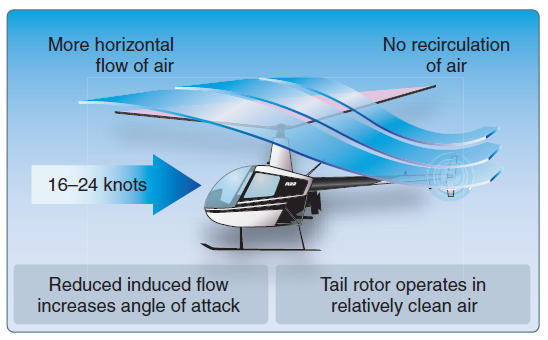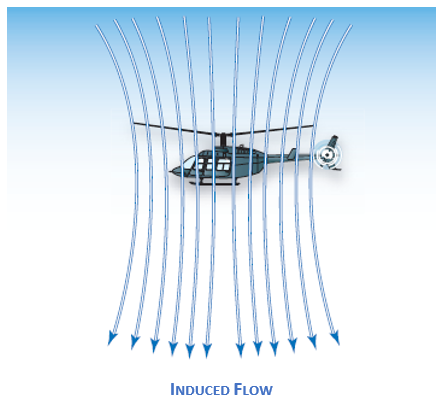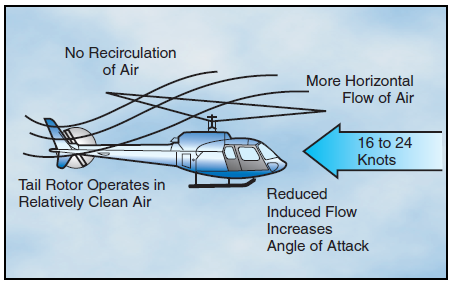¶ Introduction and Definitions
Improved rotor efficiency resulting from directional flight is called transitional lift
This definition is true but it is a general one. If we take into consideration which factor improves the rotor efficiency we can say that:
Transitional lift is present with any horizontal flow of air across the rotor. This increased flow is most noticeable when the airspeed reaches approximately 16 to 24 knots
So as we can see the factor which inproves rotor efficiency is any horizontal air flow across the rotor and it increases the helicopter's airspeed. We will see that the induced flow plays a major role in this process.

¶ Aerodynamic considerations
To illustrate the point, let's take a helicopter which is hovering (Helicopter Hover) in calm wind conditions. Of course there is a given induced flow (Forces acting on an airfoil) passing at right angles through the main rotor disc.

Now if the wind would be 24 knots, a part of the induced flow would be blown parallel to the main rotor disc , therefore a reduced amount of air will pass through the rotor disc. So we can say:\
When airspeed increases, part of the induced flow becomes parallel to the main rotor disc causing a proportional decrease in the part of induced flow through the main rotor disc If the induced flow is reduced, the angle of attack increases
If the angle of attack increases, less power is required to lift There is a gain in height without increase in power

In practice, during take-off, the helicopter makes a hover and then gains speed and altitude to enter in a straight and level flight. The transitional lift occurs when the helicopter begins to gain speed and height after the hover.
- Principles of helicopter flight, 2nd Edition
- FAA helicopter Flying Handbook
- Rotorcraft Flying Handbook
- Introduction to helicopter aerodynamics
- VID 514786 - Creation
- VID 496402 - Wiki.js integration